The Meyer Trioplan 2.8/100 is one of the most hyped lenses of the moment and prices have exploded to absolutely crazy levels. But do you get anything special but that soap bubble bokeh for your money? Read on if you want to know.
Specifications
| Diameter | 64 mm |
| Length | 36 mm |
| Filter Thread | 49 mm |
| Weight | 150 g |
| Max. Magnification | 0.15 |
| Close Focusing Distance from the sensor | 1.2 m |
| Number of aperture blades | 15 |
| Elements/ Groups | 3 / 3 |
Check current prices at ebay.de or ebay.com (affiliate links).
Image Samples
Versions
There are quite a few versions of this lens and it came in several different mounts. There even is a modern version of this lens which you can buy for the very affordable price of just 1.499€.
I didn’t spend too much time on research and found no good resource about the history and different versions. So all I can tell you is that my copy comes in M42 mount but there are also many version with Exakta mount.
If you really like this soap bubble effect be smart and have a look at the TTArtisan 100mm 2.8 which does exactly the same thing but at a fair price of $155 and with better build quality.
Build quality and handling
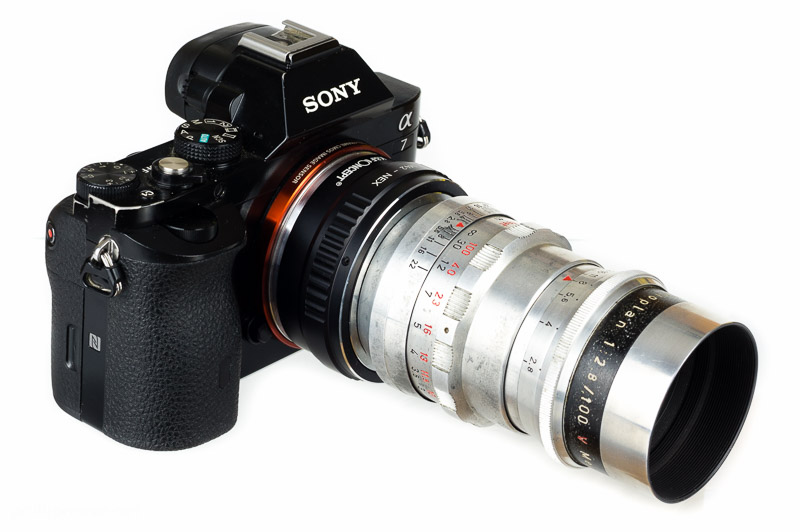
The lens is made from aluminium and it feels a bit delicate if you ask me, the fact that it is quite thin might play a role here but I felt that I had to be more careful with it than with my SLR lenses from the 70’s.
Focusing Ring
The focusing ring travels around 330 degrees from 1,2 m to infinity. It feels very smooth and is a pleasure to use.
Aperture
The aperture ring has no stops but a long way of travel and you can select any value form f/2.8 to f/22 very precisely.
The lens has 15 straight aperture blades so specular highlights stay round even stopped down.
Hood
The hood is just an about 15mm long silver ring which offers some protection against damage but it doesn’t shield the front of the lens effectively.
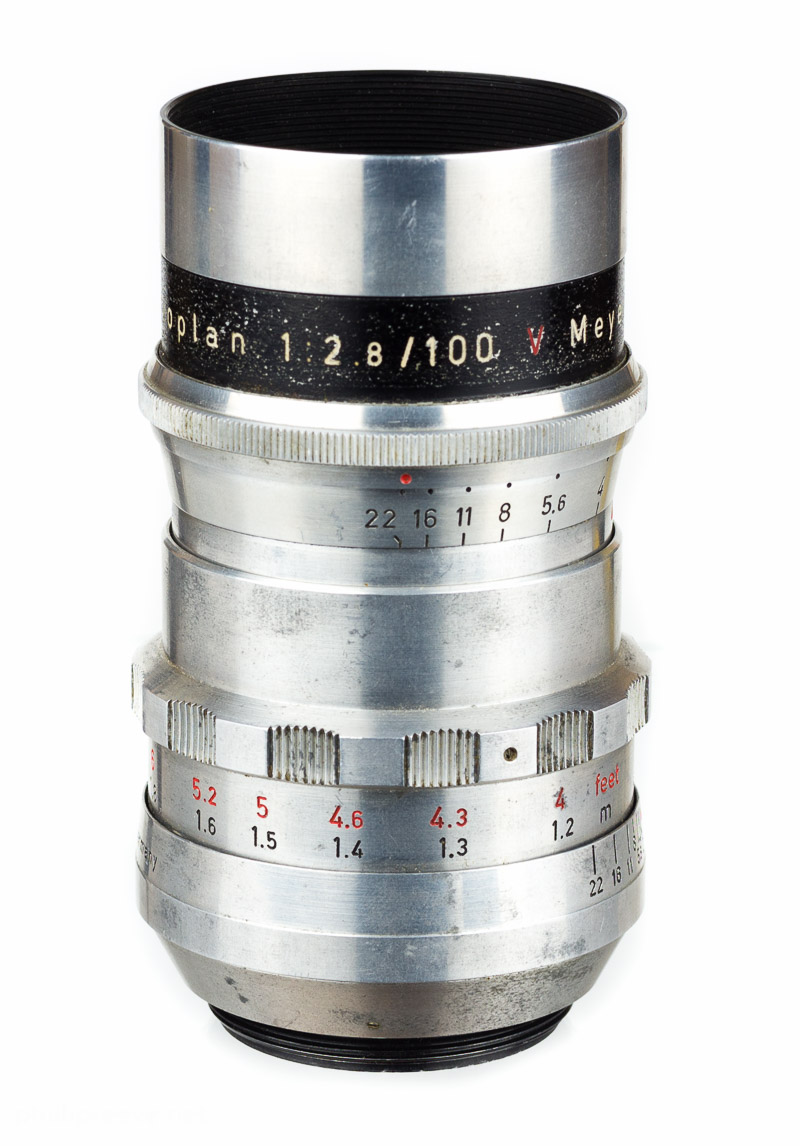
Size and Weight
The Trioplan is a small lens, especially the diameter is unusually small but it is also somewhat detrimental to the handling if you ask me.
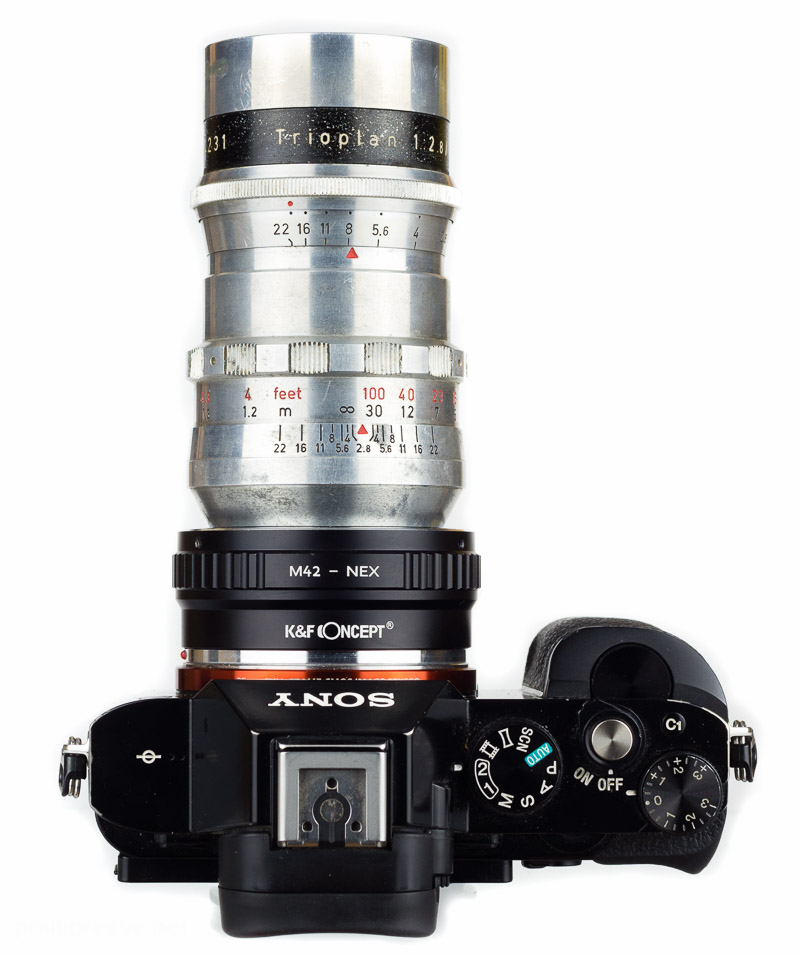
Optical performance
These results are based on the use with a Sony Alpha 7.
Flare Resistance
In short: Lousy.
Ghosting isn’t the issue but you often have to carefully shield the front of the lens with your hand to fight the veiling flare. Especially when you want to provoke the one effect this lens is known for, see bokeh.
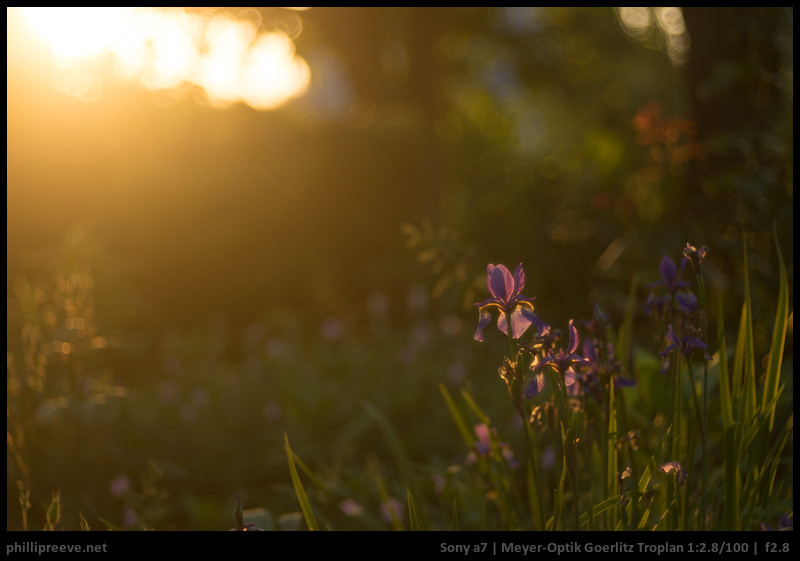
Bokeh
The Meyer Trioplan 2.8/100 is known and loved (by some at least) for it’s rather distinctive rendering of specular highlights at f/2.8 wich is a nice way of saying that it there is very strong outlining going on in the background.
I have used the lens on a couple of trips but I haven’t warmed to the effect. I still think that it usually distracts a lot from my subject and only very rarely adds to the image. Here is a comparison with the Minolta MC 2.5/100 (which costs a lot less than the Trioplan).
In my opinion the Bokeh of the Trioplan catches the viewers attention and leads it away from the subject to the background while the very soft background of the Minolta doesn’t call for any attention and lets the viewer focus on the subject.
The Meyer Trioplan 2.8/100’s bokeh characteristic changes dramatically from f/2.8 to f/4:
So at f/4 bokeh is actually very smooth.
Chromatic Aberrations
Lateral CA are corrected perfectly which is unusual for a 100mm lens.
Sharpness
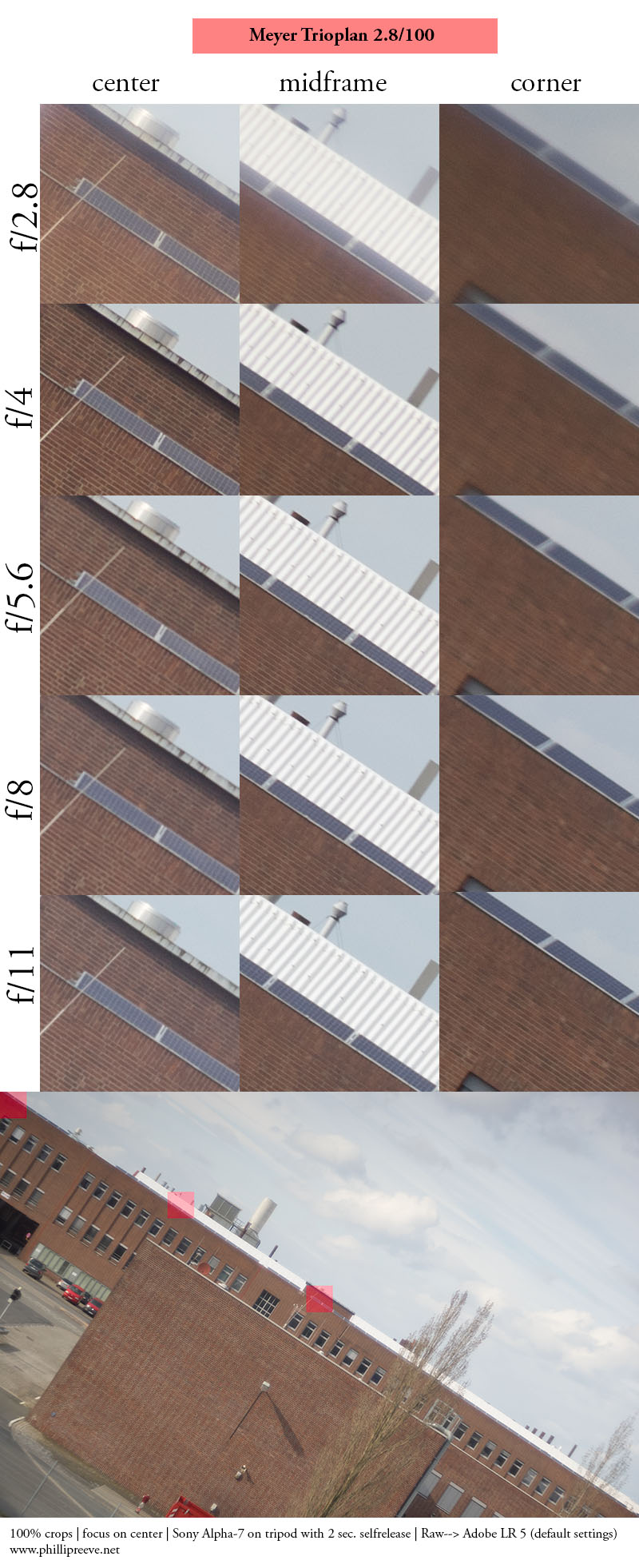
f/2.8: Decent resolution in the center but very low contrast. The midframe area is barely sharp and shows even lower contrast, the corners are soft.
f/4: Good contrast and sharpness in the center, corners are soft.
f/5.6: The Trioplan is less sharp in the center than at f/4 and contrast is lower as well. Never before have I used a lens on my a7 which showed this behavior so I repeated the test with the same result.
f/8: Contrast is even lower but now the midframe region is very sharp as well.
f/11: A significant improvement of the corners, they are sharp now. Contrast overall is pretty low though.
So all in all a rather pitiful performance here, more “modern” lenses from the 60’s and 70’s perform significantly better.
Alternatives
- Minolta MC 2.5/100: Cheaper, sturdier build, sharper, much smoother bokeh at f/2.5. Of course it lacks the Trioplan’s “feature” of the soap-bubble-bokeh.
- Zeiss Sonnar 3.5/100: Even sharper and contrastier than the Minolta. Bokeh is quite smooth as well.
- Olympus OM 2.8/100: A tiny lens which performs much better in any aspect and costs less.
Conclusion
Pros
|
Average
|
Cons
|
In a technical sense there is little positive I could say about this lens: It is soft with very low contrast and very distracting bokeh at f/2.8. From f/4 it is a decent perfomer with good bokeh and decent sharpness. Curiously the contrast drops at f/5.6, I have no explanation for this behavior. The corners only become somewhat sharp at f/11 and the Trioplan flares very easily.
I think I haven’t reviewed a lens with such a low performance before. I guess that’s what makes the lens attractive for quite a few people who call these deficits character. If you are of the opinion that optical defects adds to your images then it might actually be a good lens for you. The current price of $450 and more is absolutely bonkers if you ask me, but again, people will disagree with me here as well.
So, all in all the Meyer Trioplan 2.8/100 is a one-trick pony with a hefty price tag. I don’t get the trick but it seems that many other people enjoy it quite a lot.
If this is the case for you better have a look at the TTArtisan 100mm 2.8 which does exactly the same thing but at a fair price of $155 and with better build quality.
Price (September 2016): $500 in good condition.Check current prices at ebay.de or ebay.com (affiliate links). If this review was helpful to you, please consider using one of my affiliate links. Thanks.
Images Samples in full resolution
Further Reading
- Zeiss Contarex 2/50 – Another Character lens
- Affordable manual lenses for the Sony Alpha 7 series
- Manual lenses on the Sony a7 – A beginners guide
This site contains affiliate links. If you make a purchase using any of the links marked as affiliate links, I may receive a small commission at no additional cost to you. This helps support the creation of future content.
Latest posts by Phillip Reeve (see all)
- Review: Samyang AF 75/1.8 FE - April 12, 2021
- The FE-List now has 113 lenses on it - March 25, 2021
- 2020 – Year’s end review - December 28, 2020
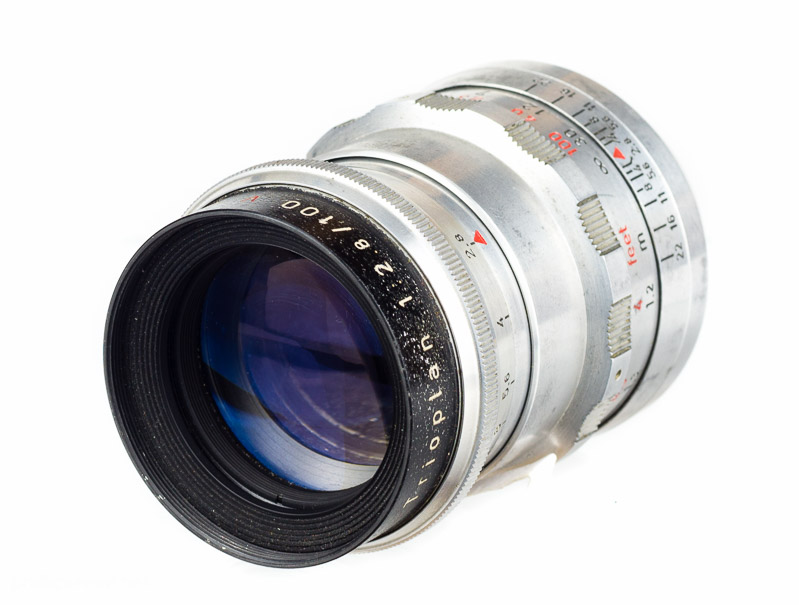
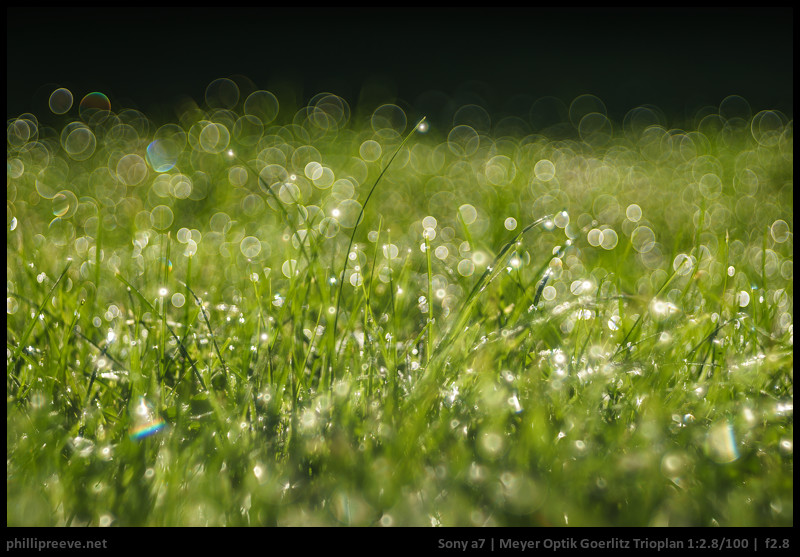
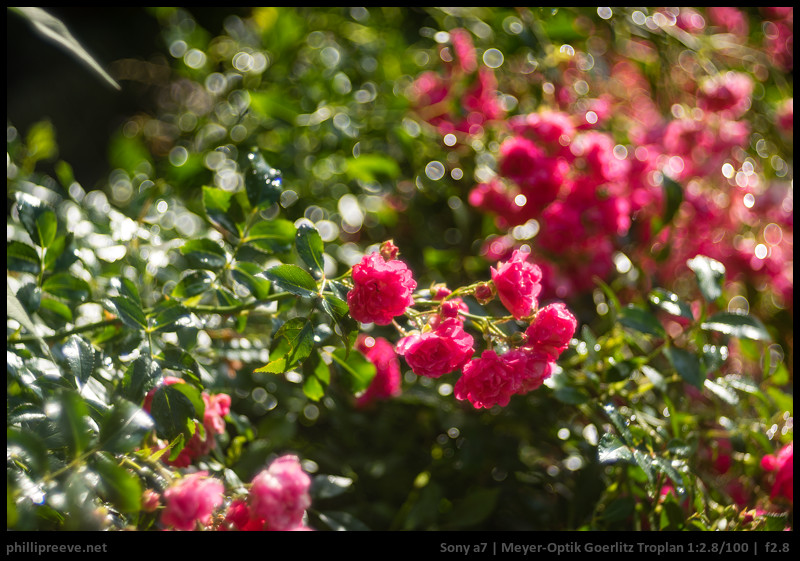
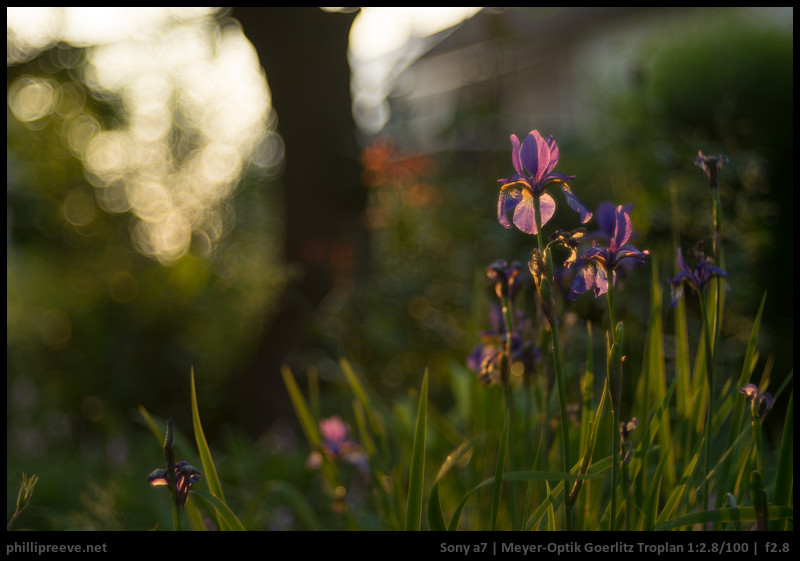
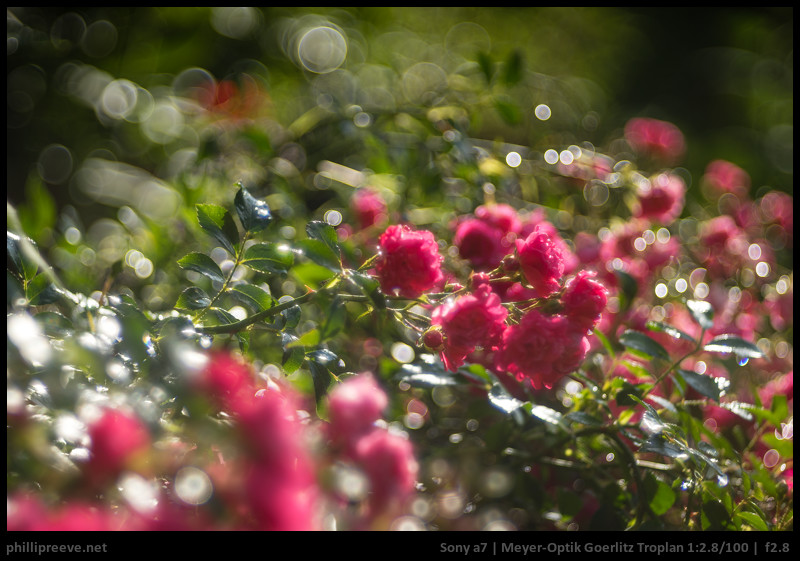
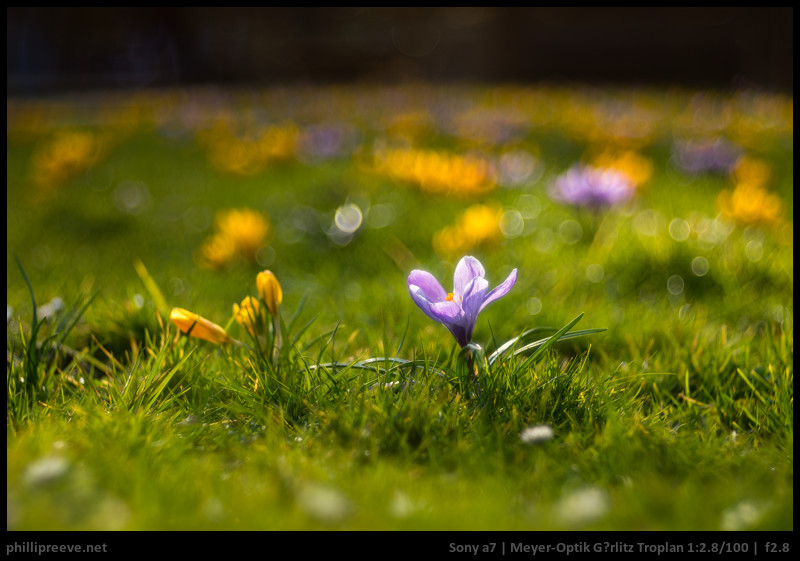




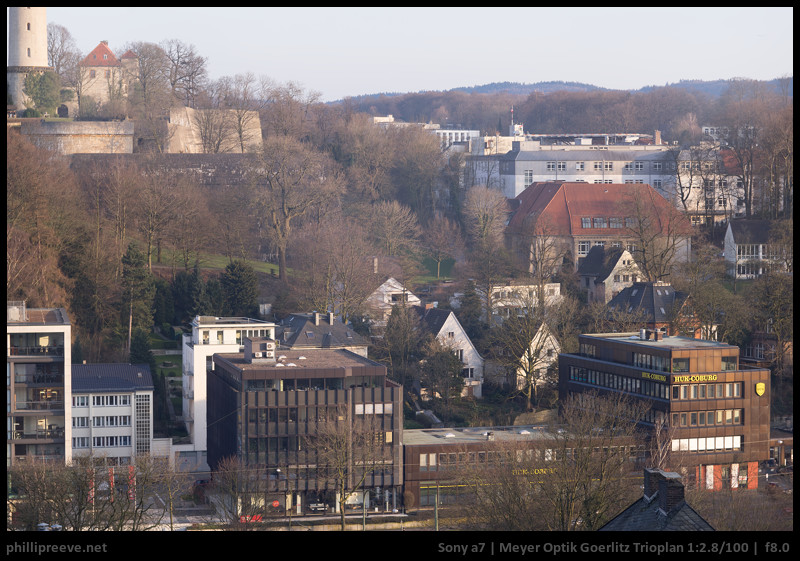
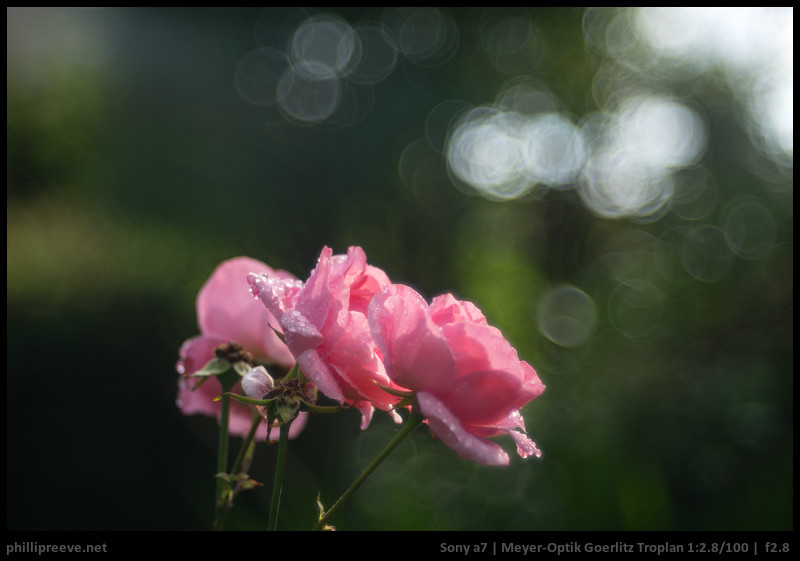
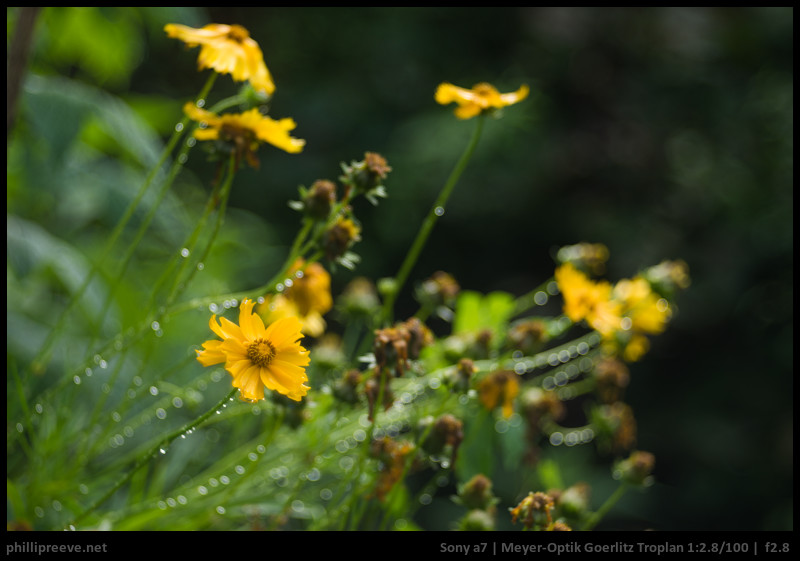
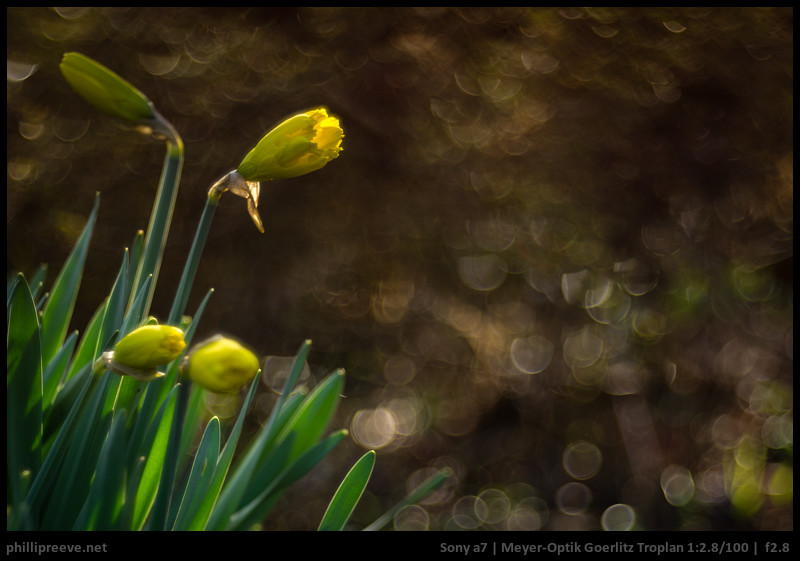
This is the first time you have panned a lens so badly 🙂 But I see what you are saying. Nice one Phillip.
This is one of those strangely wanted from many people lenses that produce bad results and they want it exactly for that. It is just a cheap and poorly designed lens from a long time ago… but today there are people who like lens babies and other bad lenses…
I can’t imagine myself doing portrait with this lens, it creates so flat and busy pictures… There are so many less expensive and better ones like Kaleinar 5N 100 2.8 for example.
I bought the Trioplan more than two years ago. At the beginnings I was really puzzled about the light bubbles in the very peculiar shots I was seeing… As Phillip, I found that the were distracting.
Today… I still think so. I don’t mind expressing minority opinions, but I’m happy that now I can quote a reputed blog for the same opinion.
Given that, I still like the lens a lot. As said, stopping down a bit greatly reduces the phenomenon and the other characteristics of the lens still have a value. In particular, I’m using it most of the time for flowers and such. In some very rare cases, I see some photos with the light ball effect which makes some sense (e.g. the last one in this review).
It should be considered that is a specialty lens: it fits only a very small percentage of shots. I’m not surprised that some like photos made with a lens which in the end has a lots of defects. For instance, people like also the “washed out” effect of old prints, so…
The price is crazy, but as soon as there are people buying it… Honestly, I paid it about 500€.
Human nature is unpredictable. Some people like perfection, others like ugliness. For the time current, and in reliance on the astronomical price of this bad lens, the preference for ugliness is rather a political choice of ultra-liberal globalists.
I believe a 20 euros helios 58 f2 has great swirly bokeh and is a good performance for the price. Maybe another russian like Jupiter and that s all you need to play with the funny bokeh!
I’ve recently bought the Helios (just a few days, no time for testing it). But it’s a different kind of boken in some cases.
I too have a couple of Helios, a great little Zeiss Tessar and must say they cut a nice compromise between the vintage and modern lens performance we are used to. They both provide soapy bokeh and shoot sharp images – and for a pittance compared to the ‘holy’ Trioplans! Good review Phillip – people ned the facts on these mythical optics to find the real values out there…
“I still think that it usually distracts a lot from my subject and only very rarely adds to the image.”
Ah, but the whole point with this lens, is that you have to shoot in such a way that the bokeh is an essential part of the image, not just a “background”, it’s a completely different way of thinking/shooting.
….such as here, where both the bokeh and “poor” flare characteristics are employed to max:
https://www.flickr.com/photos/46569894@N06/4855983141/in/photolist-8p7bBg-93LzWK-8W2ccH-8a6r9b-8p7bm4-cPatod-qh4QRS-8nVsS4-98DBDR-djEeEq-8UzgeH-ad3yMn-ed4ak8-7HLKqB
That said, I still find “a little goes a long way”. Though I’m glad I got one before the prices shot up, as just occasionaly I like to indulge.
(You could easily buy three and still have change from £100 about 10 years ago ;o))
PS. I wish I’d had the foresight to buy lots then, and sell them now ;o)
A lente pode ser uma “trampa” como atrás ficou “demonstrado”, mas a foto deste link é …. fantástica!!!!!!!!!
I’m outing myself now: I’m a great fan of the Trioplan. I fully support what Tim Hall said before. You’d have to know what to use it for, how to use it and use it FOR its unique character. It is definitely not a lens to cover your everyday shooting.
It is your kind of lens if you want to create art, not if you want to show the world as it is.
You can use it for flower macros (especially in combination with a macro ring). It can turn your background into something weirdly structured and interesting (not only bubbles). Some people experiment with overlaying textures to their images in Photoshop. The Trioplan does that all by itself.
Also it is great for colorful lights (like a shopping window at night), but the lights have to be part of the composition.
It can turn a street scene into an August Macke-like painting.
To see what I’m trying to say, feel free to look at my Trioplan images on Flickr: https://www.flickr.com/photos/123888038@N07/albums/72157663569662841
In my eyes the late success of the Trioplan is due to its unique character that sticks out in the world of millions of images that are being shot everyday.
One more thing: To improve contrast and flare resistance I use an additional rubber hood (also some Lightroom and Photoshop ;).
I have to say that you make a much more compelling case for the Trioplan than I did. Guess I like some character in my lenses but I don’t like it overtaking the image even though I have to agree that some photographers get much better results out of it.
Ben het helemaal met je eens Rolf het is een super lens maar de meeste mensen weten hem niet te gebruiken ,en dat is het probleem ,ik heb hem zelf ook en ben er heel blij mee
Ik vind het een echte topper heb ook Helios en andere vintage lenzen en ze zijn alle verschillend maar de Trioplan maakt prachtige kristal heldere bokeh ,maar inderdaad je hou ervan of je haat het en dat mag !
Thanks for sharing your photos. I just bought this lens and it looks a little quirky to use and will take some practice.
Well, now that most new lenses are great, people need to attract attention with “unique” crappy lenses.
I fully agree with Tim Ball – it is a special lens and it should not be compared against the regular lenses. The effect it produces can be awesome for some and can be annoying for the other. It is like Helios 40-2 (85/1.5), which is so swirly that some people feel seasick when they browse pictures. But add two shots like that to the wedding set and customers will be happy!
Absolut right. Judging about Bokeh is like saying: My God ist the right God!
The bubble ball effect is a nice effect with lots of drops in the background. But it gets stale very quick.
The fun part is that you can achieve the same effect with almost the same image quality with much cheaper 100/f2.8 (or the more common 80/2.8 which is not as good) Diaplan lenses out of old GDR slide projectors… They go for about a tenth to a fifth of the price of a Trioplan, plus some fiddling with the mount and housing.
I suppose if it flies your kite, why not? Personally, it doesn’t fly mine. The effect some like is just too distracting for me. I can look at any number of lovely flower shots in a row, but if they all had this horrendous bubbly, and sea sickness inducing bokeh, I’d have need of a couple of aspirin. But those with the real Cheshire cat smiles are they who sold them at today’s prices to willing buyers.
But if one thinks this lens is expensive for what it is, a Dallmeyer f1.5/50mm Septac sold for in excess of £10,000 on ebay recently. This lens was the original in that it had no camera focusing mount as it was intended to be fixed to an X-ray camera, or an oscilloscope when it was attached to its intended body made by Nagard Ltd. Now this lens adapted with a Leica M focusing mount has sold for in excess of £20,000. What on earth is going on?
X-Fujinon 55 f2.2 soap bubbles for days at 2.2. Then when stopped down is quite sharp and has good contrast. Oh yeah, they can be had for less than $10.
thanks for the tip 🙂
Thank you for this timely expose on the overhyped and overpriced Trioplans. As others have commented, my Helios and Tessar ‘normals’ have much more flexibility and optical performance – newer and better formulas all round.
Sorry, newer formulas definitely NOT.
The Cooke triplet predates the Tessar (1902), but the version of the triplet used by the Trioplan is posterior to the Tessar and the first Heliar design (1901). The classic Heliar design (Dynar) is one or two years newer and IIRC was designed at the same time of the revised Cooke Triplet. Even the Planar slightly predates the Tessar, if I’m not mistaken. All these, revised to use modern glass, are still in use. Even the triplet, using only the centre of the circle of coverage (for example in microscope optics). BTW, the mentioned Fujinon 2.2/55mm is an Unar design, a Tessar project that did not find much fortune after WWI
I would like to point out that a trioplan-like bubbles-rendering effect of the background can be achieved with some lenses others than Meyers’. Especially Minolta 70-210 f/4 md does fit the task; I use it in macro mode obtaining the above mentioned effect but, as Phillip argues, the image is so pleasant in that the background does not distract from the subject. Other lenses I used which perform similarly are Soligor 35-70 f2.5-3.5 and Nikon series e 70-210 f/4.
Those of us who love this lens know that we don’t don’t shoot “subjects” and then complain that the bokeh distracts from the subject. You have to get out of that mentality. The REAL subject IS the BOKEH……that’s what we look for first. The (apparent )”subject” is only along for the ride…to punch a hole in the optical effects. And the optical effects are about way more than soap-bubble highlights. Wide open, things sort of glow…especially if slightly out of focus. Out of focus areas can be very richly detailed, often painting-like. We shoot the optical effects….not some “subject”.
One of the most artistic lenses in the history of photography.
Cons: Bokeh at f/2.8 my eyes are bleeding. 🙂
M.
What the heck is an artistic lens?
That’s a lens that can render a scene in a way that looks like a painting rather than like exactly as we see it.
Used for water, snow and ice, the effect can be very beautiful. For portraits, I prefer my uncoated Sonnar 85/2 from 1938.
Some optics have a learning curve steeper than others. The Trioplan is one of them. Not as difficult as “proper” soft focus lenses, but still you have to understand what it is good for, and what not. The pictures shown in this review have the same subjects you’d shoot with a Planar, using the same technique. Few, tiny, soap bubbles that I don’t find disturbing, but definitely are not a central part of the image.
Today the Trioplan can’t be considered as an all-round lens, but it’s very good for specific purposes. For example night photography with specular out of focus highlights. It’s not as good for portrait use, and definitely has not much to offer as a generic lens…. but I guess those who buy a Trioplan already have other options.
Back in its time, Trioplans were made to be either cheap (3 elements, no cemented groups), or to have a very specific rendering. A 360mm for ultra large format (covers 10×12″) was not cheap! Meyer knew how to design extremely sharp lenses. Today Meyer’s optics are reputed for their bokeh, but they also designed the Plasmat, whose multicoated copies made by Rodenstock and Schneider are still used to shoot top level pictures using professional large format cameras, yesterday on film and today using crazy expensive digital backs.
I own most Trioplans (40mm, 50mm, 75mm, 100mm, 100mm N, 210mm, 240mm, 300mm, 360mm), and I love their special optical signature. Those that make sense on digital FF are in M42 mount, or were converted to PK bayonet. The longer ones are for analog large format only.
I shot some incredible pictures with them, and I l especially love the 100mm for digital full frame, but I would never use it as a generic lens.
I think that extreme sharpness is way overrated. Sometimes I pixel peep for fun, but I judge pictures from the print, or from the way they look on a good monitor. All the rest is secondary
Have you used any of the new Meyer Optik lenses? There are many listed at B&H, etc., but no reviews. Over 200 people have forked over $1100 USD for the new 105/2.7 Makro Plasmat!
https://www.kickstarter.com/projects/meyeroptik/glorious-dr-rudolphs-apo-plasmat-lens-105mm-f27-re/description
Is this just pure snakeoil? Because it certainly seems like it!
I am currently trying to get a review sample of the Meyer Optik 0.95/50 Nocturnus III.
From what I see optics are the same as Zhong Yi Mitakon 0.95/50mm, but then it is said to have way better flare resistance which is the achilles’ heel of the Mitakon.
I am still waiting for an answer.
But in general I am not a fan of those remakes of outdated lenses, those don’t give me anything.
I would still like to see remakes of actually interesting lenses like Jupiter 2/85 with modern coatings, Voigtlander 4/180 Apo Lanthar with better contrast, 2/180 as small and good as the short lived Olympus to only name a few.
But apparently a random name from the past is enough to sell pretty much anything on Kickstarter nowadays.
In my opinion: Yes. There might be a few nice images taken with these lenses but many times as many really bad ones.
By chance I came upon this page again… so I’m using this chance to try to answer to Andrew’s questions.
Yes, modern Meyer lenses have nothing in common with vintage ones. Only the names!
And no, I haven’ tried them. I expect from them what is reasonable to expect from modern chinese lenses made by minor brands (not Laowa and Irix, those can be just great). Some are decent, some are good, all are well priced… unless they are branded Meyer.
I have used some old Meyer lenses that are as interesting as the Trioplan, like the Primoplan and the 5.5/180mm. The former has a beautiful creamy rendition and the latter is a tele that does bubble even stopped down. Of course if you are not a fan of that kind of optical signature, I’d avoid shelling out good money for a Trioplan or a Primoplan. First see if you like what you get with a cheap lens like the Fujinon 2.2/50mm. Let’s be clear, it’s NOT a great lens, but it allows to start doing bubbles on the cheap.
Flickr is your friend, see what others are doing with a certain lens and see if it fits your taste. Let’s be clear, modern lenses make pictures that look more or less the same. It takes a very trained eye to perceive the differences. Instead with some vintage primes you get a radically different result, that everybody can tell apart
Well, as I read you complaints about flare, veiling and bubble bokeh and actually looked at your sample images of each, I found those defects you complained about actually quite beautiful and artistic.
The flare was especially artistic and lovely.
This is a lens with a lot of character that draws a unique image.
Sometimes it is about the look and feel and not the empirical science of a lens.
Well my approach is usually to give both: The evidence and what I make of it. That leaves room to disagree on the basis of the evidence 😉
I really enjoyed this article. It’s plain brutal, and doesn’t try to posture trying to like it. The title and description announce a beheading, and every page further goes to finish the job. On the other hand, the photos are there, and are totally open to interpretation. However, one trick ponies can usually do several tricks. And just as it is very hard to do bokeh that resembles a gaussian curve, it’s not that easy to automatically invent a lens that gives this stark sharp edge. This lens is an anomaly and has merit on it’s own. Congratulation to those using it and making compositions where the outlining becomes central but weaves into the story and magic of the shot. There aren’t many, but I’ve seen quite a few where it makes sense, and represents a point of view into the nature of light.
Huh, my grandfather used an M39 mount pre-war version of this lens (and a 50mm Hektor) on his Leica II. I inherited it but haven’t really tried it much.
Your close and candid review, and the divergent reactions from practitioners, both deliver value, to me.
I think the question of “What is perfection?” in the bokeh domain may be slightly “blurred” because our eyes don’t work like longer lenses. We naturally perceive very little background or foreground fuzzing. So, the way any portrait or macro lens does this is artificial in that sense. Perhaps acceptable forms of lens blur are just a matter of what we are most used to. Or, for commercial photographers, a question of what their clients like.
Anything other than just “less clear” could involve such extra thoughts, in order to reach a value judgment.
Perhaps a long term strategy of lens manufacturers could be adding more features so that we can manipulate the fuzzy areas separately, along the lines of Nikon’s DC 100 and 135 f/2 lenses. The Meyer Trioplan just overcorrects certain aberrations, as I understand it. In new lens designs, this could be variable, to give soap bubbles on a fuzz dot, center highlights on that fuzz dot, or perhaps other choices.
In any case, please keep up the discussions, everybody!
I enjoyed your review. Your words were very negative but the photos have talked me into buying one. They are delicious!
I love the “character.” I also love my swirly Helios and Jupiter and super shallow dof with busy bokeh on my fast c-mount lenses. I love radioactive tinting on my old rokkor that gives me awesome B&W contrast.
Also amazed at the focos app and how it approximates this stuff computationally.
If you don’t like optical character get yourself a nice new lens. They’re all machine made to much better tolerances than the old ones that were hand made and polished.